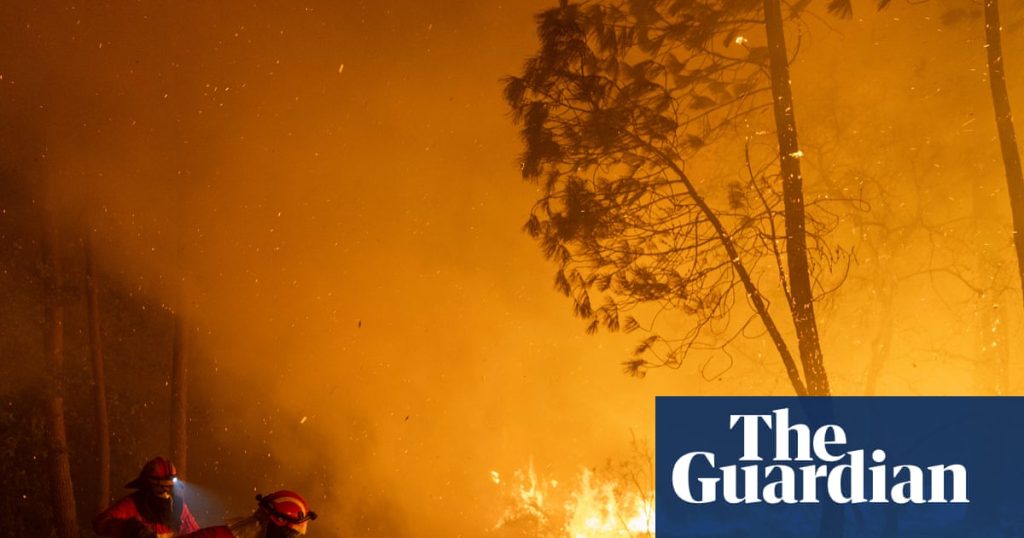Choking smoke spewed by wildfires is far more dangerous than previously thought, a new study has found, with death tolls from short-term exposure to fine particulates underestimated by 93%.
Researchers found that 535 people in Europe died on average each year between 2004 and 2022 as a result of breathing in the tiny toxic particles known as PM2.5 that are released when wildfires rage.
Under standard methods, which assume PM2.5 from wildfires is as deadly as from other sources, such as traffic, they would have expected just 38 deaths a year.
The study comes as wildfires ravage southern Europe, and new data from EU fire monitors shows that 895,000 hectares (2.2m acres) have burned so far in 2025, breaking records for this time of year. They have pumped out more than twice the amount of PM2.5 that wildfires have generated on average by this point in the year over the last two decades.
“Previously, people assumed the same toxicity for wildfire particles and all particles,” said Prof Cathryn Tonne, an environmental epidemiologist at the Barcelona Institute for Global Health (ISGlobal) and co-author of the study.
“Our paper shows evidence that – although it happens less often – the health impact for the same amount of particles is stronger for wildfire particles,” she added.
Dirty air is one of the biggest threats to human health, and research suggests wildfires are a significant contributor to the vast death toll. In December, a study attributed 1.53 million deaths around the world each year to short-term and long-term exposure to air pollution from wildfires.
The ISGlobal researchers, who looked only at the smoke’s short-term effects, for which the evidence base is stronger, combined daily mortality records from 32 European countries with estimates of PM2.5 pollution from 2004 to 2022.
Using models that account for an expected lag in deaths, they found exposure to wildfire smoke increased the risk of death in the following week.
For every extra microgram of PM2.5 fouling 1 cubic metre of air, they found that all-cause mortality rose by 0.7%, respiratory mortality went up by 1% and cardiovascular mortality rose by 0.9%.
“The results are concerning, considering that wildfires and other extreme events are increasing exponentially with climate change,” said Prof Antonio Gasparrini, an environmental epidemiologist at the London School of Hygiene & Tropical Medicine, who was not involved in the study.
Devastating blazes compounded by relentless heat have killed several people across southern Europe and the Balkans in recent weeks. But deaths from the toxic fumes released by the fires are likely to go unnoticed.
“Smoke can affect populations far away from the fires,” said Tonne. “So many more people will be exposed to smoke than the immediate physical threat of the flames.”
The researchers said the study was limited by the lack of variability in the data on exposure to fire-related particulate matter, which made it harder to estimate how people’s health responded based on age and sex. They were also unable to “completely disentangle” the health burden of fire-related PM2.5 from ozone, another pollutant released by wildfires, though they said estimates were largely consistent when they adjusted the main model for ozone from all sources.
Toxic pollution from wildfires creeps into the homes of more than 1 billion people a year, a study found in May. It concluded that air purifiers are an effective but expensive solution to indoor air pollution, which can be nearly three times higher on wildfire days than normal days, even when all windows and doors are closed.
The risk of fire weather has risen as greenhouse gas emissions have heated the planet and dried out vegetation in some regions. The Iberian peninsula has been hit particularly hard this year, with Spain and Portugal accounting for the bulk of Europe’s burned area.
Associate professor Victor Resco de Dios, a forestry engineer at the University of Lleida, said the fire belt would move north in the coming years and decades.
“What we are witnessing now will sooner or later occur also in central and northern Europe, where we have also seen an aggravation of the fire problem,” he said. “This is not a Mediterranean problem, but a European one.”

